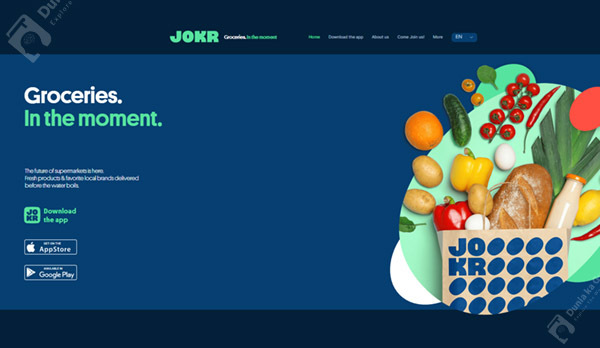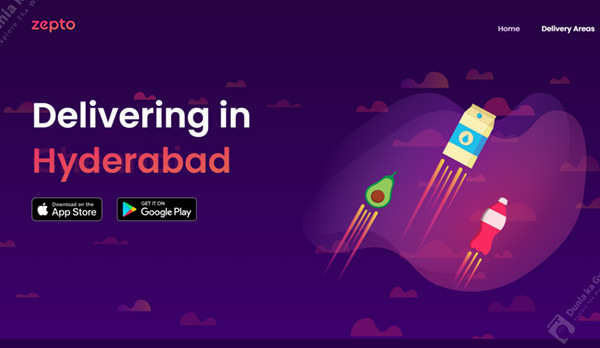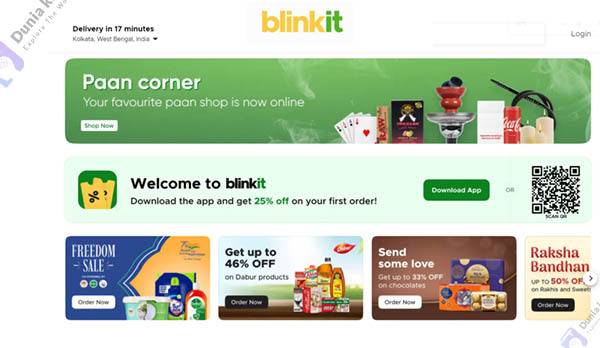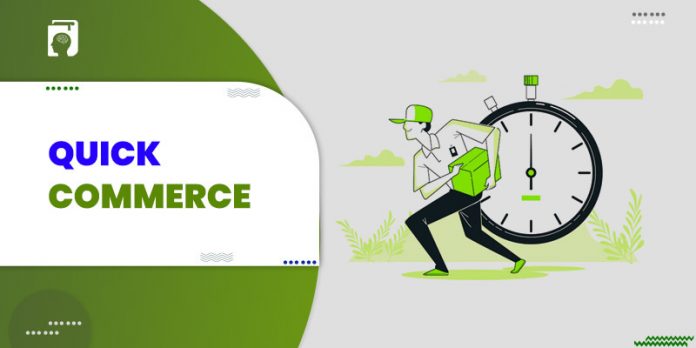Over the last decade, e-Commerce businesses have amazed us with their huge product categories, 24-hour delivery services, and one-hour shipments. However, talking about all the perks of eCommerce, nothing can beat the customer satisfaction of one-day delivery models. The concept of Quick Commerce lies exactly in that.
With e-com businesses becoming more customer-centric now, we can even order and get a product delivered within minutes. From one day to 15-minute delivery, Quick commerce is what has made it possible to get our groceries, food, or other essential goods delivered much faster.
If you are looking to know more about Quick Commerce, how it works, and how it differs from traditional e-Commerce, you have come to the right place. In this article, we will decode the whole concept of Quick Commerce. Check out to know more.
What is Quick Commerce?
Quick commerce, or Q-Commerce, is a new business concept that emerged at the time of the pandemic as large-scale eCommerce fulfillment failed to meet the rising demands. Q-commerce mainly focuses on completing orders within 15 minutes to a maximum of 2 hours.
The quick Commerce includes a quick completion of the order process that includes micro to more modest amounts of deliverables ranging from food, daily staples, stationeries, drugs, and many more. To accomplish the staggering product fit ideas to the current online marketplace, numerous organizations have embraced the concept of Quick commerce.
What are the differences between Quick Commerce and Traditional E-Commerce?
Whether it is product fit, delivery speed, or warehousing, quick commerce, and traditional e-commerce differ in many ways. Below is a detailed overview of how e-commerce differs from the traditional e-commerce market.
1. Delivery Speed
The most particular element separating quick commerce from traditional e-commerce is delivery speed/time. Quick commerce markets ordinarily have micro-fulfillment centers (MFCs) situated inside thickly populated regions. This enables Q-commerces to ensure ultrafast deliveries within 10 minutes to two hours after order requests.
With micro fulfillment habitats and an imperative supporting system for request forecasting, stock proportion, and last-mile courier delivery set up, q-commerce organizations can pick, pack, and dispatch orders close rapidly.
However, when it comes to the regular e-Commerce business model, there is no possible way to match the delivery speed that Q commerce can offer.
2. Traditional warehouses vs. Micro-fulfilment
Micro-fulfillment warehouses are another key element of quick commerce that differentiate it from the traditional e-commerce market.
Traditional fulfillment centers could be enormous spaces – normally around 300,000 square feet. Since these warehouses are so large, they will generally be situated outside of cities or in industrial or rural places with the availability of ample amounts of space.
These distribution centers are beyond big cities, so they are ordinarily inappropriate for satisfying last-mile delivery into the city. It takes extra time for couriers to transport to the requested location.
On the other hand, q-commerce orders are regularly completed through an organization of micro-fulfillment warehouses. These are smaller, normally 2,000 to 5,000 square feet, and situated in main cities. Thus, the use of micro fulfillment centers in Q-commerce delivery chains significantly decreases the distance to the customer and empowers ultrafast and proficient last-mile delivery.
3. Sustainability
One more difference in quick commerce is the method of transportation utilized for last-mile delivery. Quick commerce businesses frequently utilize two-wheeled vehicles, for example, bicycles, e-bicycles, or bikes, for delivery.
The use of two-wheelers as the primary mode of transportation allows much faster movement of goods within busy city traffics. Also, e-cycles, scooters, and bicycles use renewable energy as fuel, making it a more sustainable delivery model. Quick commerce has seen an incredible boom due to its decreased dependence on traditional delivery vehicles like vehicles, trucks, and planes.
Whereas, Traditional eCommerce business often involves bigger delivery vehicles for transportation. As per a report on CNBC, Amazon possesses 40,000 semi-trucks, 30,000 vans, and around 70 planes to guarantee rapid delivery of its items in the US.
4. Product fit: Selection of Goods
Usually, an eCommerce store could convey 15,000 SKUs or more, depending upon the size of the business. On the other hand, q-commerce organizations depend on micro-fulfillment warehouses that normally have a limit of 2,000 to 4,000 SKUs (all-out SKU count for all brands inside the MFCs) of quick-moving products.
Thus, micro-fulfillment isn’t the ideal fit for each brand and sort of item. Because of space constraints in MFCs, heavy products and products that don’t turn quickly are not ideal in the quick commerce model.
What are the Benefits of Quick Commerce?
1. Speed
As compared with traditional eCommerce businesses, the q-commerce system can get merchandise into customers’ hands in a short period. This means expanded customer satisfaction and has been displayed to give significant ROI to e-commerce brands. Furthermore, a 2021 worldwide buyer information survey directed by PWC shows that quick delivery is customers’ #1 choice generally while purchasing online.
2. Reliability
Various micro-fulfillment-based quick commerce companies like Ohi utilize the latest technology incorporating AI or AI forecasting, giving incredibly high inventory accuracy and on-time delivery rates that outperform traditional eCommerce.
3. Sustainability
The majority of customers prefer sustainability as a vital aspect. Perhaps, quick commerce can adjust eco-consciousness impartially for a better delivery experience. Incredibly declining dependence on fuel-based transport, the capacity to decrease or eliminate the outside packaging materials, and other supplier explicit practices make quick commerce a sustainable business in the market.
Implementing Quick Commerce
If you want to gain potential customers in this competitive market with a superior net revenue, quick commerce is a vital to-have process in your delivery business.
Below, you will learn how to manage more extensive audiences with more extensive benefits and a broader productivity edge while keeping up with the idea of superfast delivery.
1. Setting up the local hubs
Initially, you must create a local hub or warehouse where product picking, packing, and shipping processes should be possible at a quicker and less expensive rate. A quick commerce system can be implemented by including a local warehouse inside the prompt near the customers. It will include functional proficiency, decrease the additional miles and traveling expense, and accumulate in less time required to reevaluate.
Irrespective of the road conditions and traffic situation, you can decide to request that your delivery services offer really quick delivery. The blend of a coordinated effort with the 3PL at an exceptionally practical rate is another pre-foundation task that can help in boosting the business.
2. Keeping up with the Stock
Carefully choosing a stock and its SKU is another essential aspect that should be remembered once you get into Q-commerce. For this, you need to do intensive statistical research and get an optimal image of the demand and fluctuation of adaptable demands of customers. You can decide to have a stock list and figure out the amount of the total products.
It will be an additional benefit to quickly answer the fluctuation in demand and raise the delivery interaction by getting the stocks from the nearest fulfillment centers and accelerating the delivery window. Subsequently, you can accomplish the quick commerce model for your current business right away.
Top Players in Quick Commerce
During the COVID-19 pandemic and after the lockdown, the market has witnessed various rising business players that have decided to adopt the business model of Q commerce. Below are some of the successful q-commerce market players:
1. Gorillas

Gorillas is a German-based online grocery business. The Gorillas adopted the business model that provides customers a choice to select and order their desired groceries from the store with the doorstep delivery option.
Leading its way with its hyperlocal fulfillment warehouses, Gorillas has already secured itself as a solid presence in Berlin with a $44 million net worth. Their deliverables list consists of a wide range of products, starting from food to liquor, and free delivery anytime.
Gorilla has made a simple, fast process for customers to select and order within their app, available for Android and iOS. Customers need to enter their location and payment method, and they are good to go with the fastest doorstep delivery.
2. FridgeNoMore

Fridge No More is a new york-based company that has adopted Quick commerce by offering 15 minutes delivery to customers. With their free delivery, no minimum order value, and without any subscription, Fridge No More is growing tremendously across the cities.
They have situated their cloud warehouses near cities or a neighborhood within a one-mile delivery radius. The small cloud storage makes it convenient to offer an affordable, no-hidden-charged delivery system.
3. Jokr

With the title of Groceries at the moment, Jokr has adopted the q-commerce market system. With their micro-fulfillment stores, Joker is offering instant delivery to the doorstep. Moreover, by offering customers a quality selection of products, including food brands, groceries, fruits, and many more. Sustainable delivery, the main element of quick commerce, is also practiced by Joker with goal-setting of positive impact on the world.
4. Zepto

Zepto has done pretty well since it started its journey in 2020. Founded by two 19-years old young entrepreneurs, this q commerce grocery delivery startup operates in most of the major cities in India. The list includes Delhi, Mumbai, Bangalore, Gurgaon, Kolkata, Hyderabad, Pune, Noida, Ghaziabad, and Chennai.
With a value of $900 million, the company is very close to becoming a unicorn. Zepto guarantees to deliver the basic food item rapidly. The organization started its operations in Mumbai in 2021 and has stretched out its activities in other major areas.
5. Swiggy Instamart

A well-known company, Swiggy, has introduced its Swiggy installment. Considering the COVID-19 pandemic, Swiggy adopted the quick commerce marketing system by launching installments for quick deliveries across cities. Customers can easily purchase emergency-supplied daily essentials, including fruits, veggies, eggs, dairy products, and snacks.
The customer just needs to download the Swiggy app, can choose from a wide selection of products, and can expect delivery within a few minutes. The availability of a wide selection of brands makes it a perfect example of the q-commerce market.
6. Dunzo

Dunzo is a Bengaluru-based startup delivery company. On-demand delivery startup Dunzo gives admittance to fast delivery to various major cities of India, making it one of India’s most blazing startup ideas, drawing in many financial backers. Since the rising growth of the company, Reliance invested $240 million and owned a 25.8% stake in the company.
Dunzo offers enough solidarity to battle with the current competition that incorporates Blinkit (previously Grofers), new startup Zepto, Swiggy-installment, and BigBasket, among others, by delivering groceries basic products to metropolitan households quickly.
7. BlinkIt

Along with the online grocery startup, Grofers has made another headway by rebranding itself as Blinkit. As per the idea, Grofers will now apparently deliver instantly in the blink of an eye.
A month after launching this quick commerce market system to deliver food within 10 minutes, Albinder Dhindsa rebranded the company. Now, numerous orders are currently being handled consistently across 12 urban cities with the aim of delivery in the blink of an eye.
The Future of Quick Commerce
eCommerce is witnessing tremendous competition, and stakes are at the top. The company’s scales have entered the market, yet it demands to run a productive delivery model. That means that the biggest few players will accomplish the required market infiltration.
If you are seeking to dive deep into the concept of quick commerce, this guide will offer the quick delivery of detailed information about everything you need to know about it.
Since the introduction of Quick commerce in the 1990s, it has been developing with a powerful stream of interest, buyer expectations, and innovation, making this new sub-industry flourishing globally.
A recent report by Gopuff states an EBITDA is in the loss of $150 million despite $340 million in revenue income. As of now, one of the biggest Q commerce players in the global circuit, Gorillas, might be working at a negative rate of – 6%.
Thus, these negative trends will probably go on until the main players have assembled the important functional, technical, and customer boundaries to keep the competition out of the market.




